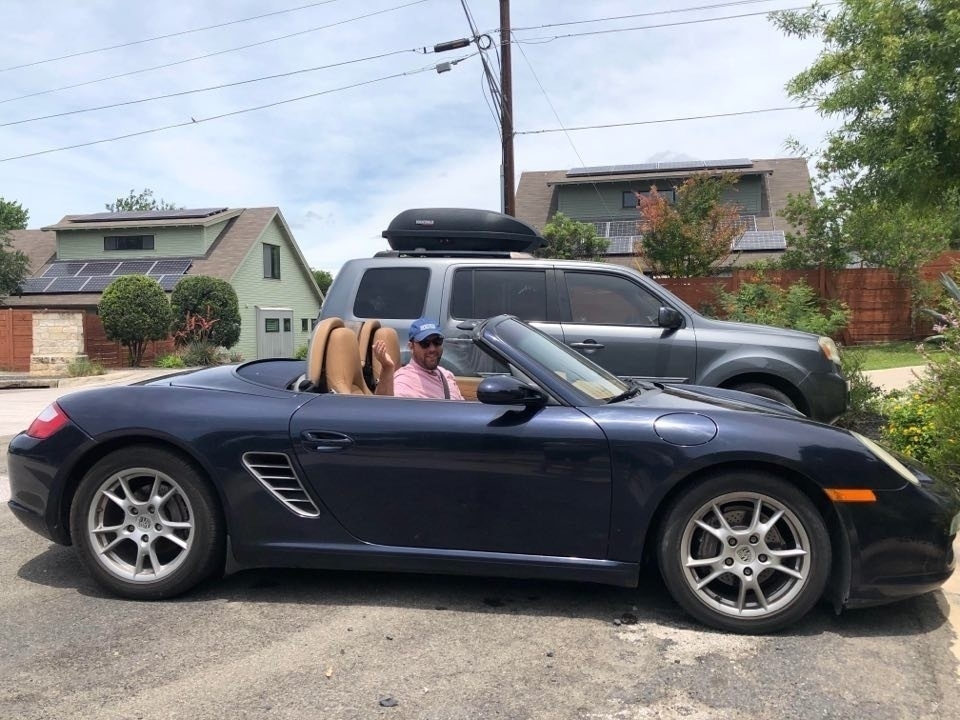One strong center and two senses stimulated
I rented a 12-year old Porsche Boxster via Turo this weekend. Good app, great car. I’m shopping older German convertibles for my next car. Paying a little to rent a prospective car for a day is way better than driving one for less than an hour. Plus, no sales tactics!

The center of the Boxster experience, it turns out, is the tachometer and the engine. The tachometer is dead-center, set in distinctly-Porsche numerals with a digital speedometer in the bottom. You don’t want any other gauges. It’s nice to know when you’re about to run out of fuel, I suppose.

The flat-six cylinder engine sits right behind your shoulders. It is, according to my wife, loud. I found it sonorous. I don’t have a picture of it because you literally can’t see it without taking the car apart. And, a picture of a dirty machine with 130,000 miles isn’t right. The engine on a Porsche is meant, and designed, to be heard.
Once I was between that tachometer and engine, I knew I was definitely in a Porsche Bubble. The switches, seats, even entertainment system didn’t matter much. It helped that it was a lovely day and the air conditioner was up to the challenge. But it’s all auxiliary to the sights and sounds.
Turns out, that’s sort of all you need. A strong design center and two senses stimulated can make a product that stands the test of a decade or three.